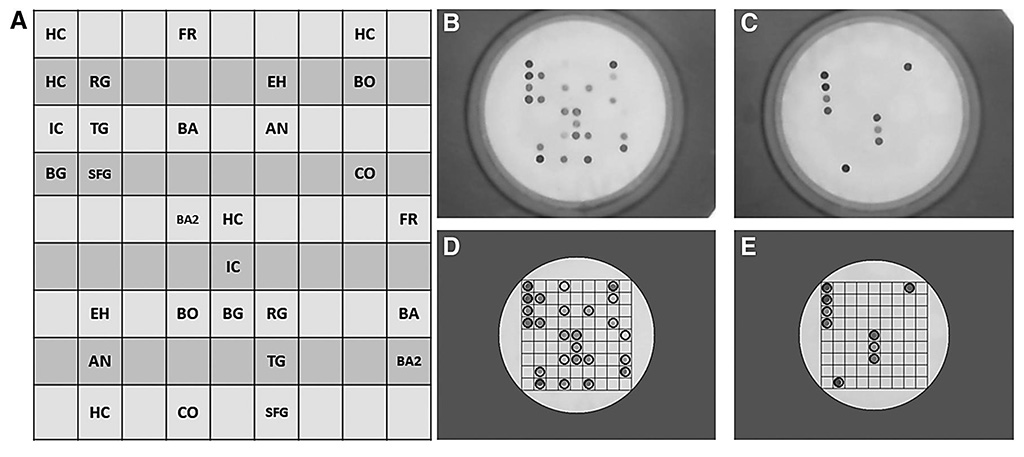Rapid DNA Flow Technology Platform Detects Tick-Borne Bacterial Pathogens
By LabMedica International staff writers
Posted on 13 Nov 2019
Ticks are the most important vectors for infectious diseases in the northern hemisphere and second only after mosquitos worldwide. As a result, there is an increasing public health interest in tick-borne pathogens.Posted on 13 Nov 2019
Ticks can transmit diseases such as Lyme disease, human granulocytic anaplasmosis, and spotted fever rickettsioses, among others. Therefore, there is a growing need to develop better and faster diagnostic tools that can detect zoonotic human pathogens in clinical samples.

Image: Simultaneous detection of Anaplasma spp., Bartonella spp., Borrelia spp., Coxiella burnetii, Francisella spp., and Rickettsia spp. on a tick-borne bacteria flow chip (TBFC) kit (Photo courtesy of Rutgers University).
Medical Infectious Disease Scientists from Rutgers University (New Brunswick, NJ, USA) and their international colleagues collected samples from 212 patients who presented a broad range of clinical signs/symptoms consistent with multisystem disorders that could be suggestive of an infection caused by any of the pathogens included in the panel of the tick-borne bacteria flow chip (TBFC) kit. Human DNA was used to spike positive controls came from cerebrospinal fluid (CSF) or biopsies from patients who tested negative to the pathogens included in the testing of the TBFC kit.
The TBFC is intended for the simultaneous qualitative detection of DNA from seven different genera of tick-borne bacteria, Anaplasma, Ehrlichia, Borrelia, Bartonella, Coxiella, Rickettsia, and Francisella, using a multiplex PCR followed by reverse dot blot automatic hybridization into a macroarray CHIP based on DNA-Flow Technology (hybriSpot). The kit offers the amplification of bacterial DNA by two multiplex polymerase chain reactions (PCRs) containing all primers for the specific amplification of the seven bacteria genera and two sets of primers for the amplification of two internal controls.
The scientists reported that the sensitivity of the TBFC was tested for each pathogen independently in the presence of human DNA. Despite human co-infections with tick-borne pathogens being rare, one of the strengths of the TBFC is that it can detect them. To prove that the TBFC detects co-infections, they included positive controls (103–104 plasmid copy/genome equivalents, PC/GE) for each pathogen. The results confirmed that the TBFC could detect all the pathogens simultaneously without compromising its sensitivity.
The TBFC platform offers four significant advantages. First, it is rapid and automatized, significantly shortening the time for the diagnosis of tick-borne pathogens. The TBFC kit gives results in 3.5 hours, while the in-house PCR-reverse line blot takes 8.5 hours for one pathogen. Second, it allows the simultaneous detection of multiple pathogens, which represents an excellent advantage for diseases that display similar symptoms early on. Third, the TBFC can analyze a wide variety of clinical samples with high sensitivity and specificity. Fourth, it is a valuable alternative to serology for early diagnosis.
The authors concluded that the TBFC kit is a rapid and highly sensitive and specific diagnostic tool, capable of simultaneously screening multiple bacterial pathogens. The study was published on October 22, 2019 in the journal Vector-Borne and Zoonotic Diseases.
Related Links:
Rutgers University














